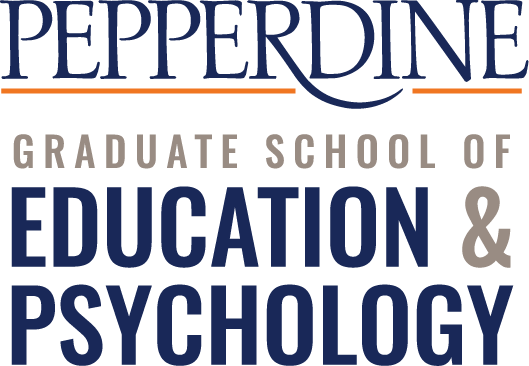In recent years,the master’s degree program in psychology at Keiser University has seen some pretty explosive growth. In fact, enrollment surged 626% between 2018 and 2022, according to the school’s accounting.
“Students have become more aware of our unique ability to upskill and provide [return on investment],” says Robert Keiser, vice chancellor of the Keiser University Graduate School. He’s also the son and grandson of the founders of this Fort Lauderdale-based private university.
Earn Your Master's in Psychology online from Pepperdine in as few as 18 months. Bachelor's degree required.

Similarly, Golden Gate University’s psychology master’s degree program saw enrollment jump 158% during a comparable timeframe. The two master’s degrees that the San Francisco-based private school offers—one in industrial-organizational psychology, the other in counseling psychology—have seen increased interest since the pandemic, according to Tom Wooldridge, chair and associate professor at Golden Gate’s school of psychology.
“Both degrees have seen a fair bit of growth, but the counseling degree, it really skyrocketed,” Wooldridge tells Fortune. “I’d say we went from 60 or 70 students to 160 in that two or three years.”
These schools aren’t alone; enrollment rose more than 15% between fall 2020 and fall 2021 among the nine programs on Fortune’s ranking of the best online master’s degree programs in psychology.
The pandemic, along with other factors, have led more students to pursue master’s degrees in psychology. Here’s how schools are accommodating an increase in enrollment.
How did the pandemic fuel interest in master’s of psychology programs?
As with so much else recent change, the increased interest in psychology graduate programs in recent years largely stems from the pandemic.
Like many higher education institutions, Golden Gate moved to online offerings when COVID-19 reared its spiked protein barbs. Since the pandemic has loosened its grip on society, the university has continued to offer instruction through live online classes, hybrid formats where students take classes both online and in person, as well as asynchronous online classes. This added accessibility caused enrollment to swell.
“We had a pretty consistent or maybe slight growth up until COVID started,” Wooldridge says. “Sometime during COVID, about a year in, enrollment really started to grow, especially in the counseling program.”
While Keiser University also expanded its online capacity in the pandemic, it was an early adopter of online education, starting in the late 1990s. During the pandemic, however, the university did help more than 70 other institutions build out their online platforms. Today, 40% of Keiser undergraduate and graduate students take classes either online or in a hybrid format.
But swelling online enrollment in the pandemic isn’t the only factor at play. COVID also helped to raise awareness about the importance of mental health—resulting in a surge in demand for mental health professionals, along with interest in graduate degree programs.
“The public consciousness was really raised around the necessity of mental health care, the effects of isolation and social disruption on people’s emotional lives,” Wooldridge says. “A lot of our students, they’re hungry to do something that gives them a sense of meaning or purpose. A lot of them have benefitted from psychotherapy themselves and I think they see it as a way to try to give something back.”
With more people seeking therapy in the pandemic, Keiser says it helped lift some of the stigma surrounding the mental health field.
“There was a concept that if you sought help from therapy or from a psychologist that maybe you were mentally weak or fragile, and I’m happy to say that that stigma and that taboo is being lifted,” Keiser says. “The psychology fields, all of them together, are really being seen as a boon to society.”
How have demographics impacted the surge in psychology graduate students?
Both Keiser and Wooldridge say that their programs are attracting a different cohort of students than the national average: “They’re older, they’re working, they’re looking for career advancement,” Keiser says.
With the growth in digital accessibility, more students that these schools appeal to were able to take advantage of their educational opportunities. And the ability to learn online has been a benefit to the demographic Golden Gate serves, Wooldridge says.
“Often our students are not just in school,” Wooldridge says. “They’re often working or they have families, and the commute can be quite daunting to campus two or three times a week. Being able to show up on Zoom, that can easily cut several hours out of the time commitment that’s required.”
What does the field look like going forward?
While we hopefully won’t see a public health crisis on the level of the pandemic anytime soon, Wooldridge says the exposure and need for mental health professionals will likely stay.
“It’s a really great time to get into the field because there’s such demand for mental health workers,” Wooldridge says. “There’s a lot of jobs out there. There’s far more than even when I was a student, opportunities for post-graduate training and different kinds of training that you can get. It’s really a cool time to be entering the field.”
Keiser echoes Wooldridge regarding the future of the mental health profession.
“There’s so much demand in the field,” Keiser says. “Unfortunately, in this society, there are many citizens who need support, whether it’s behavioral or cognitive or mental health in the psychology realm. There are many people who are struggling to self-actualize, struggling with identity, struggling with just the considerations of living in a modern, high-paced, tech-driven society. I think that’s where the call to serve really comes from.”
Check out all of Fortune’s rankings of degree programs, and learn more about specific career paths.





